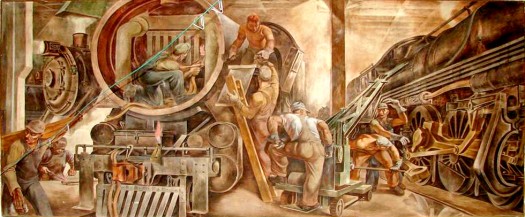A Placemaking Journal
Traditional vs. Modern: More than just a pretty face
 New Urbanism, by definition, is style neutral. Its focus is getting the form — the urbanism — right but then letting the architecture be what it may.
New Urbanism, by definition, is style neutral. Its focus is getting the form — the urbanism — right but then letting the architecture be what it may.
That’s not to suggest, of course, that many New Urbanists don’t have very strong feelings one way or the other. Many do. Particularly as it relates to traditional vs. modern.
Oftentimes, especially among non-practitioners, this style debate shakes out with a sigh and a reluctant acceptance that taste is subjective and beauty is in the eye of the beholder. Which reduces everything solely to an aesthetic argument.
But what if there’s more to it?
Behind the face
Personally, I tend to prefer the traditional though I agree that both can be beautiful. I’ve even written before that the perception of beauty seems rooted more in particular proportions and arrangements than in particular stylistic approaches. In the right hands, I agree: A modern facade can certainly get it right. It’s just not my preference.
So why is that? Through years of reflection, I know that I like the traditional’s sense of history and embedded wisdom. That certainly appeals to the pragmatist in me. I like the way it reflects a sense of organic cultural consensus. I like the way it doesn’t feel arbitrary.
On the flip side, I’m turned off by the seemingly needless reinvention and embedded ego that so often seems to characterize the modern. It feels like hubris to me, which seems antagonistic and, ultimately, anti-community.
These are all characteristics that transcend particular elements of style. I get that. But I’ve continued to feel that there was still some other driver of my traditional preference I’ve yet to put my finger on. Until now, that is, thanks to this rather remarkable video that, through the magic of CGI, re-imagines Paris as a place defined only by its facades. A sort of giant Hollywood back lot set.
Apparences (4K) from Claire&Max on Vimeo.
Regardless of taste, I’d expect people to have a similar reaction. A feeling that something’s incomplete. Empty, even. And that’s when it struck me: The face of a building, like that of a person, hints at something more. But the greater story — the deeper story — is the one found within the building itself. And that story is ultimately one of people coming together, committing themselves to the city and to each other.
It’s a story of coexistence, interdependence, and service. It’s a story that, under the best of circumstances, says “I need you and you need me and here within these walls and this city, we’re going to figure out how to make that work.”
In that context, our consideration of facades is not unlike our propensity to judge a book by its cover. We seek the story inside and we use what’s readily apparent as an indicator of what’s to be found.

How do we best tell the story of us?
Telling the story
If you buy that, then maybe you’ll be willing to take one more step with me and concede this: Traditional architecture tells that particular story better. It just does.
The fundamentals of human relationships, rooted in trust and commitment, aren’t subject to whim. They don’t need reinvention. They’ve been tested and retested through the centuries and are rooted in both history and in the trial and error that history represents — subject only to fine-tuning as our shared context presents new ways to interact.
Traditional architecture, the physical embodiment of our shared existence, performs similarly. It reflects our essence of commitment and interdependence because it’s evolved right along with us — through family, tribe and, ultimately, community.
Traditional architecture speaks of familial blood and hard-earned fellowship, with all the legacy and shared endeavor those words imply. It speaks of what it means to be human at our most substantive. And most fragile.
It speaks of us.
Meanwhile, it seems to me, a modern facade does quite the opposite, telling an impermanent, fleeting story. A one night stand, so to speak. A temporary intermingling of strangers with nothing much to gain save for a little diversionary pleasure.
And don’t get me wrong. I enjoy my own fair share of diversionary pleasures. But I like to think I’m more than that. Ultimately, something better than just that.
As this video makes clear, our facades can signal more than just another pretty face. So how well are we expressing who we really are?
If PlaceShakers is our soapbox, our Facebook page is where we step down, grab a drink and enjoy a little conversation. Looking for a heads-up on the latest community-building news and perspective from around the web? Click through and “Like” us and we’ll keep you in the loop.


